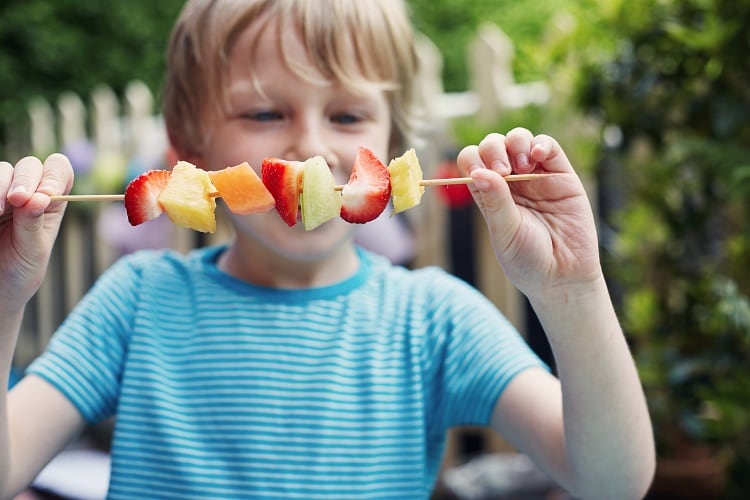Nutrition for babies, toddlers and children is a complex and sometimes contentious issue with parents feeling under pressure from certain societal influences. Whether it’s breastfeeding versus bottle feeding or homemade meals versus prepared meals, there is a seemingly never ending number of food-based decisions for parents to make, and plenty of people on the sidelines eager to critique and criticise those decisions.
So how can parents navigate the complex world of infant and child nutrition and what help is available from the industry?

It’s all about education
“Education, education and education” Those were the famous words of former prime minister Tony Blair as part of his campaign speech in the lead up to the 1997 UK general election and it appears that, when it comes to nutrition, the food industry agrees.
“I think the first step is really education and that education needs to start at school,” Dr Sara Colombo Mottaz, head of medical, scientific and regulatory affairs at Nestlé, told FoodNavigator during the recent Positive Nutrition Digital Summit.
Educating people on nutrition from a young age will allow for them to make informed decisions on the foods they consume. And when those children grow to become adults, with children themselves, they will not only be well informed about nutrition but will also be able to help educate the next generation.

Affordability of food
The incomes and financial circumstances of families across the world varies hugely so ensuring that nutritious foods are available at an affordable price is essential.
“We see food security becoming a big issue due to inflation and also geopolitical activity,” says Dr Colombo Mottaz.
This view is supported by Laura Seymour, founder of cooking subscription service Foodini Club, who told us that, “struggles with food poverty have led to why we have nutritional reduction.”
Which nutrients are children deficient in?
All children are different and their health is subject to multiple external influences. However certain trends have been identified when it comes to nutrient deficiencies.
“We have a broad variety of nutrients lacking that go from macro to micronutrient,” says Dr Colombo Mottaz. “We see a lot of undernutrition unfortunately around the world. We see a lot of overnutrition. The main nutrients gap are vitamin D, iron, calcium, omega 3 and fibre.”
The numbers of fruits and vegetables consumed by children has been on the decline for many years now, with a recent NHS study finding that just 18% of children aged 5 to 15 are eating the recommended five portions a day.
"We see parents telling us on a daily basis how hard it is to get their little ones to eat fruit and vegetables,” says Mandy Bobrowski, marketing director at Organix.
But help is available for parents and fruit and veg sellers too.
“Fresh fruit and vegetables, that’s our whole agenda really. Our USP is about getting families and children engaged with seasonal fruits and veg and regaining essential life skills,” Foodini Club’s Seymour explains. “Fruit and veg is where it’s all at.”

Introducing different flavours and textures
When it comes to introducing new flavours and textures, timing is everything. Once a child reaches sixth months and begins to move from breast milk or formula onto more solid foods they are far more open to experimenting.
What is food neophobia?
Food neophobia is the tendency to reject or be reluctant to try new and unfamiliar foods. Due to the period of its occurrence, which falls in the years of early childhood, it can significantly affect a child’s food choices, shape taste preferences, and significantly influence the quality of a child’s diet.
Neophobia is an evolutionary behaviour helping to protect against the ingestion of potentially dangerous substances.
“There is a window between six months and eighteen months which is when kids are more adventurous and so more keen to be exposed to and accept different textures and flavours,” explains Dr Colombo Mottaz. “It’s very important during that phase that parents are guided on how to introduce texture and flavour because these will set up the behaviour of the child later on.”
However, once a child reaches eighteen months, food neophobia can develop making the introduction of new foods to a child more challenging.
“We did research which found that 53% of parents were unaware of the importance of building up texture in that window,” explains Organix’s Bobrowski.
The Organix team decided to educate parents in a fairly unique and entertaining way in order to help them understand the importance of texture for their children.
“We invited into our offices eighty parents and had a big highchair and we actually said to them 'come and try our foods, come and taste what texture can give you',” explains Bobrowski. “Staggeringly 40% of parents don’t ever try the food that they’re feeding their little ones. We’re rolling this out as a challenge to parents which is 'try your little one’s food'.”

How are food manufacturers helping parents?
Though there is much work still to be done with regards to improving childhood nutrition, the food industry is already working to provide fresher and more nutritious foods to children.
“When we started in 2018 what we did not understand was ‘why is baby food older than the baby eating it?’” says Tobias Gunzenhauser, co-founder and CEO of Yamo. “As adults we all try to eat more healthy more sustainable, fresher. Why would that not be the case for kids?”
Brands are also helping parents to include certain foods in their children’s diets, working around food associations, as well as making the purchasing fun for the adults.
“All of our products carry funny names from the eighties and nineties because we are kids from the eighties and nineties and we want to do something where parents have a laugh,” says Yamo’s Gunzenhauser. “So one of our products was called 'Nicky Spinaj' like the rapper but 'Spinaj' because it’s spinach.”
However this clever play on words still couldn’t tempt parents to buy a product that they were certain their children would not eat.
“We saw that the sell out of that product was far below all the other products. Then we started interviewing parents to try to understand if they did not like the product and we found out that most parents would say ‘oh spinach, my kid does not like spinach’. Then we renamed the product to Benedict Cucumberbatch because it also has cucumber in and now the product sell out is almost as good as every other product,” explains Gunzenhauser. “It’s interesting to see the biases that some parents have.”
Additionally, brands are coming up with ways to support parents in finding interesting and exciting meals to cook for their children at home.
“One of the single challenges parents find is actually looking for inspiration,” says Organix’s Bobrowski. “Our recipe hub gets 10,000 visitors a month just looking for inspiration about ‘what should I be feeding my six-month old, my nine-month old, my twelve-month old?”
The subject of food and nutrition can extremely complicated, particularly with regards to children, however the food industry is aware of this and is working to provide a wealth of support and information to assist parents.



